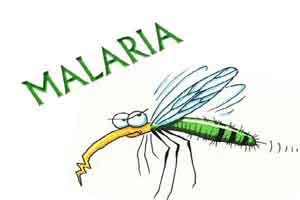- Home
- Editorial
- News
- Practice Guidelines
- Anesthesiology Guidelines
- Cancer Guidelines
- Cardiac Sciences Guidelines
- Critical Care Guidelines
- Dentistry Guidelines
- Dermatology Guidelines
- Diabetes and Endo Guidelines
- Diagnostics Guidelines
- ENT Guidelines
- Featured Practice Guidelines
- Gastroenterology Guidelines
- Geriatrics Guidelines
- Medicine Guidelines
- Nephrology Guidelines
- Neurosciences Guidelines
- Obs and Gynae Guidelines
- Ophthalmology Guidelines
- Orthopaedics Guidelines
- Paediatrics Guidelines
- Psychiatry Guidelines
- Pulmonology Guidelines
- Radiology Guidelines
- Surgery Guidelines
- Urology Guidelines
Novel bed net could prevent millions of cases of malaria : Lancet

A novel bed net could prevent millions of cases of malaria by reducing the cases of Malaria by 12 percent compared to presently used bed nets.The new research has been published in The Lancet.
The scientists from Durham University (UK), Centre National de Recherche et de Formation sur le Paludisme (Burkina Faso), Liverpool School of Tropical Medicine (UK) and the Swiss Tropical and Public Health Institute (Switzerland) jointly conducted a clinical trial in Burkina Faso, West Africa involving 2,000 children that lasted for two-year.It was found that a new type of mosquito net reduced cases of clinical malaria by 12 per cent compared to the conventional one used normally.
The research found that:
- The number of cases of clinical malaria reduced by 12 per cent with the new type of mosquito net compared to conventional nets.
- Children sleeping under the new bed nets were 52 per cent less likely to be moderately anaemic than those with a conventional net. Malaria anaemia is a major cause of mortality in children under two years old.
- In areas with the new combination bed nets, there was a 51 per cent reduction in risk of a malaria-infective mosquito bite compared to areas with conventional nets.
According to statistical figures of World Health Organisation in 2016, Malaria infected about 216 million people across 91 countries and killed 445,000 people. The majority of deaths occurred in children under the age of five in the poorest parts of sub-Saharan Africa.
It was found that female Anopheles mosquitoes were increasingly becoming resistant to pyrethroids, the most common insecticides used to treat traditional bed nets.
The researchers suggest the use of bed nets with a combination of chemicals should be explored for areas where mosquito resistance is a problem considering the fact that there was an increase in number of people infected with malaria as a result of insecticide-resistant vectors .
The New type of bed nets used in the study contained a pyrethroid insecticide which repels and kills the mosquitoes as well as an insect growth regulator, pyriproxyfen, which shortens the lives of mosquitoes and reduces their ability to reproduce.The ingredients on the nets not only kill more mosquitoes but also reduce the number of infective bites than conventional nets treated only with a pyrethroid. The chances of mosquitoes becoming resistant to both chemicals in the combination bed nets are low .Therefore this can be used as a better alternative to tackling malaria in areas where mosquitoes have become resistant to the single chemical used in traditional bed nets.
Professor Steve Lindsay, from the Department of Biosciences at Durham University in the UK, said: “This study is important because malaria control in sub-Saharan Africa has stalled, partly because the mosquitoes are adapting and becoming resistant to the pyrethroid insecticides used for treating the old bed nets.
“In our trial in Burkina Faso we tested a new type of net that had a pyrethroid plus an insect growth hormone, which was significantly more protective than the old net type. If we had scaled up our trial to the whole of Burkina Faso we would have reduced the number of malaria cases by 1.2 million.
“Malaria still kills a child every two minutes so we need to keep working to find the best ways to stop this from happening. It is clear that conventional methods used for controlling malaria mosquitoes need to be improved and new additional tools developed.”
The clinical trial compared a bed net with two active ingredients, a pyrethroid plus an insect growth hormone, against the traditional widely-used nets treated with the pyrethroid insecticide alone.The conventional bed nets were replaced over time with the new combination nets in 40 rural clusters in Burkina Faso covering 91 villages and involving 1,980 children in 2014 and 2,157 in 2015. The subjects included children aged between six months and five years.
The number of mosquito bites and incidence of clinical malaria in the children in the study were recorded by health clinics and the number of mosquitoes in the houses was tracked through monthly light traps. A number of randomly selected children were visited at home four times and examined clinically for signs of illness. Their blood levels were also tested for possible anaemia.
The new Bed nets are certainly better and more effective but researchers stress that people in affected areas should always sleep under a bed net, whether that is a conventional or a combination type.

Disclaimer: This site is primarily intended for healthcare professionals. Any content/information on this website does not replace the advice of medical and/or health professionals and should not be construed as medical/diagnostic advice/endorsement or prescription. Use of this site is subject to our terms of use, privacy policy, advertisement policy. © 2020 Minerva Medical Treatment Pvt Ltd